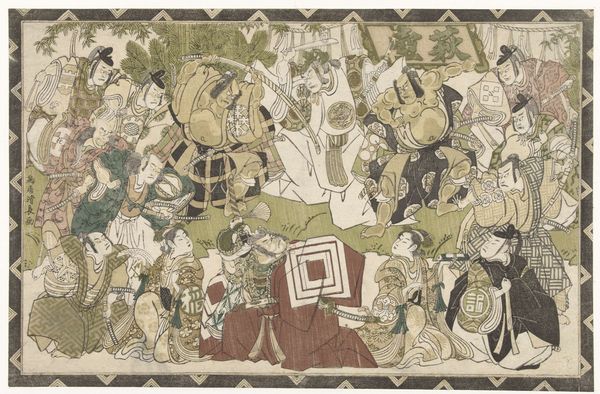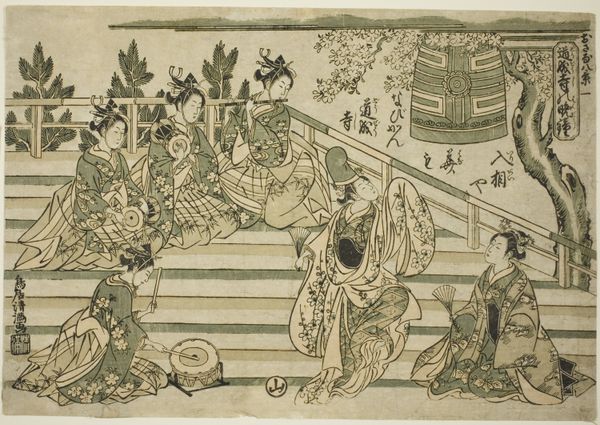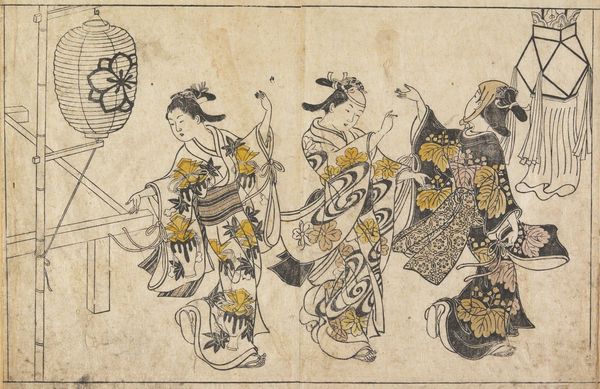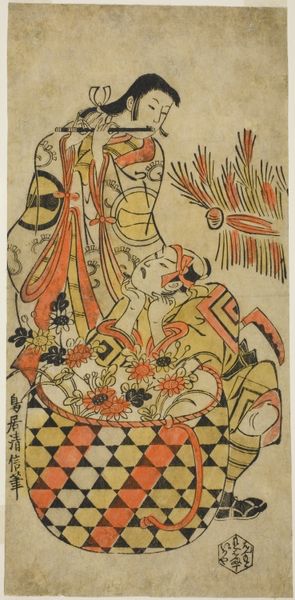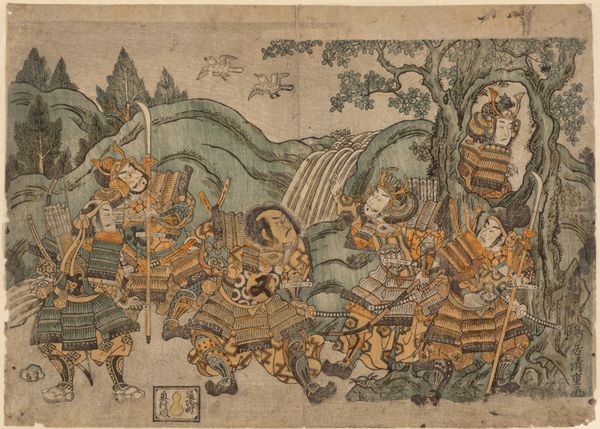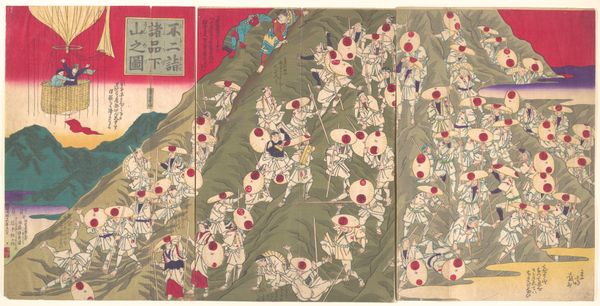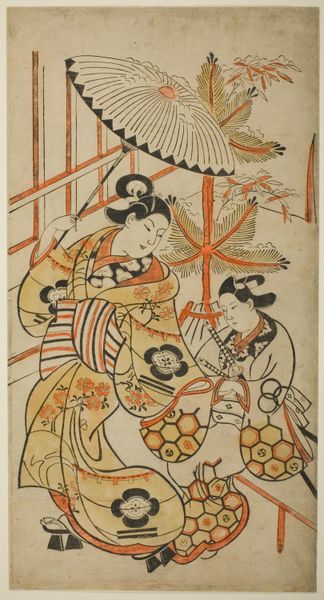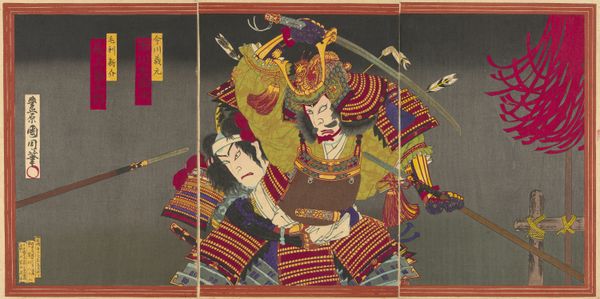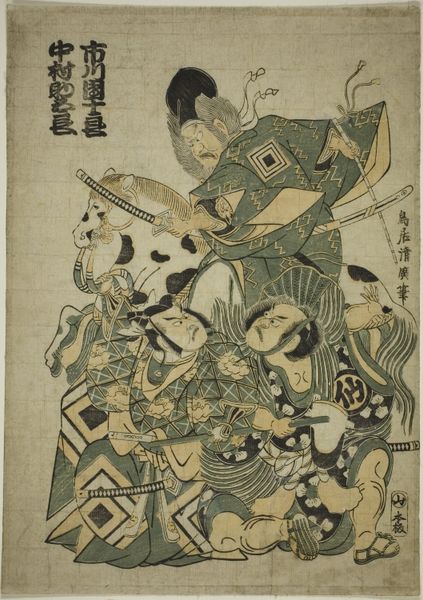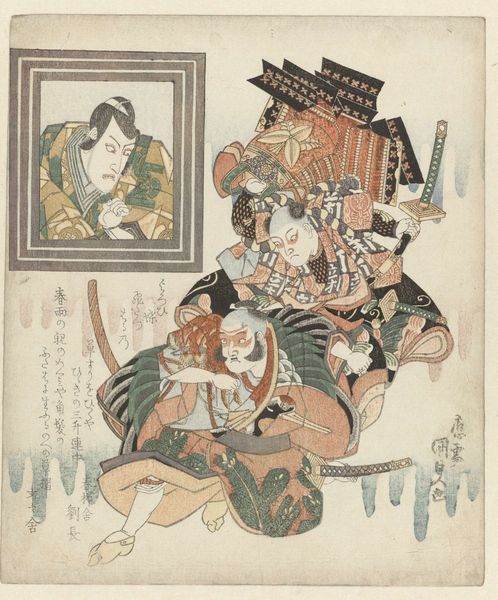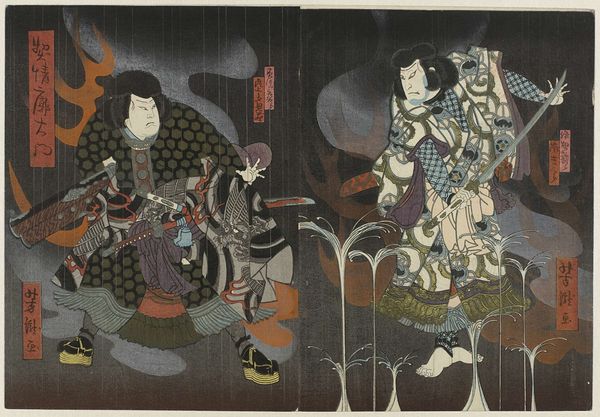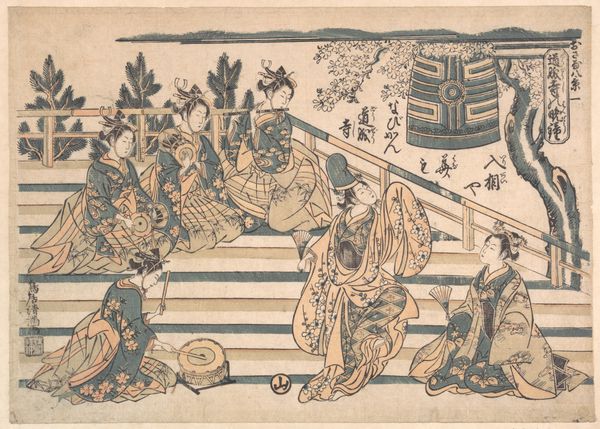
print, woodblock-print
#
narrative-art
# print
#
asian-art
#
ukiyo-e
#
figuration
#
linocut print
#
woodblock-print
#
group-portraits
Dimensions: 22.9 × 36.4 cm
Copyright: Public Domain
Editor: Here we have Torii Kiyonaga’s “Hagitsubo - A Parody of Shibaraku,” likely from 1785, a woodblock print. It’s...bustling! A crowded scene, figures in theatrical poses, and lots of patterned fabrics. How do you interpret this work? Curator: It's fascinating how Kiyonaga uses ukiyo-e, a traditionally "low-brow" art form, to engage with Kabuki theatre. It speaks to the fluidity of cultural hierarchies at the time. What strikes me is how this print both celebrates and gently satirizes the popular Shibaraku plays. Note the central figure, echoing the hero but perhaps...less heroic? How does that skewing of power dynamics change your reading? Editor: I see what you mean about the parody! The figures seem less imposing, more… playful? It’s interesting to think about subverting expectations of masculinity and heroism through art. Curator: Precisely. Consider the audience: likely merchants and townspeople who found themselves reflected—or perhaps gently mocked—in these prints. Kiyonaga captures not just a scene, but a social commentary on class, identity, and representation within Edo society. Think about who is represented, and who gets to represent whom. Editor: So it’s not just about the play itself, but about who is watching the play, and what they bring to it. Curator: Exactly. Art becomes a mirror reflecting not only the surface, but also the complex web of power and perspective within society. It asks: who gets to tell the story, and whose version are we seeing? Editor: That's really changed my perspective. It's more than just a pretty picture; it's a snapshot of a whole social ecosystem. I had not initially thought about who was commissioning such art. Curator: It's a conversation across time, about performance, identity, and the critical eye that views it all. We, too, are part of that audience, centuries later, still grappling with these themes.
Comments
No comments
Be the first to comment and join the conversation on the ultimate creative platform.
